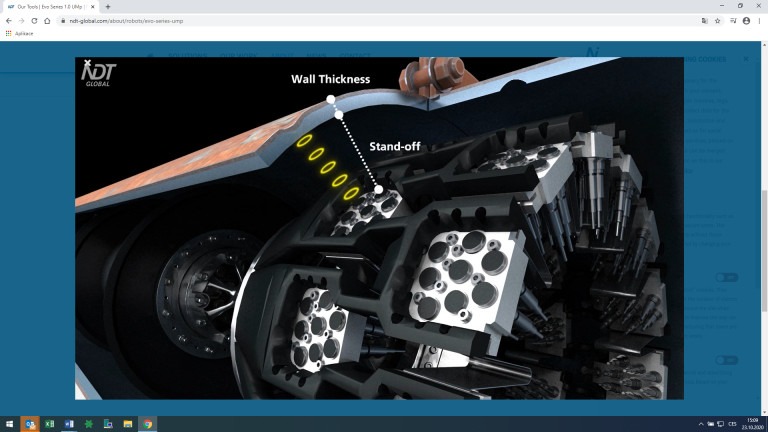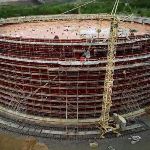The integrity of oil pipelines plays a critical role in the overall business context of MERO ČR, a.s. Pipe defects such as corrosion or scratches cause material losses and a significantly reduction in wall thickness. In the worst case, this can lead to accidents. Therefore, the continuous detection and evaluation of material losses with regard to the safe operation of oil pipelines is extremely important, especially in order to determine the corrosion rate and the subsequent elimination of the consequences of its action.
For this purpose, every 4 years for the Druzhba oil pipeline and every 10 years for the IKL oil pipeline, internal inspections of the pipeline are conducted using highly advanced ultrasonic inspection technology known as smart pigging. The inspection is performed for MERO, ČR a.s. only by the world’s most advanced technological companies in this field.
The smart pig (see Fig. 1) is inserted into the oil pipeline and is carried away by the oil stream during pumping.
In addition to the battery and the powerful evaluation unit, the device also contains sensors that transmit and receive an ultrasonic signal, which can be used to determine the dimensions of material losses or cracks and other defects. The technology is able to find, for example, any loss of material with a size of 5 x 5 mm and more. (see Fig. 2)
This technology provides MERO, ČR a.s. not will only a list of defects that the smart pig evaluates, but also a comprehensive scan of its oil pipelines. (see Fig. 3). Special software is used to see every millimeter of the pipe literally in the palm of your hand. Based on these inputs, a long-term plan of repairs and other inspections is developed using special software and calculations according to world standards and based on the knowledge and experience of experts from MERO, ČR a.s. as part of a comprehensive strategy to ensure the integrity of the oil pipeline.






